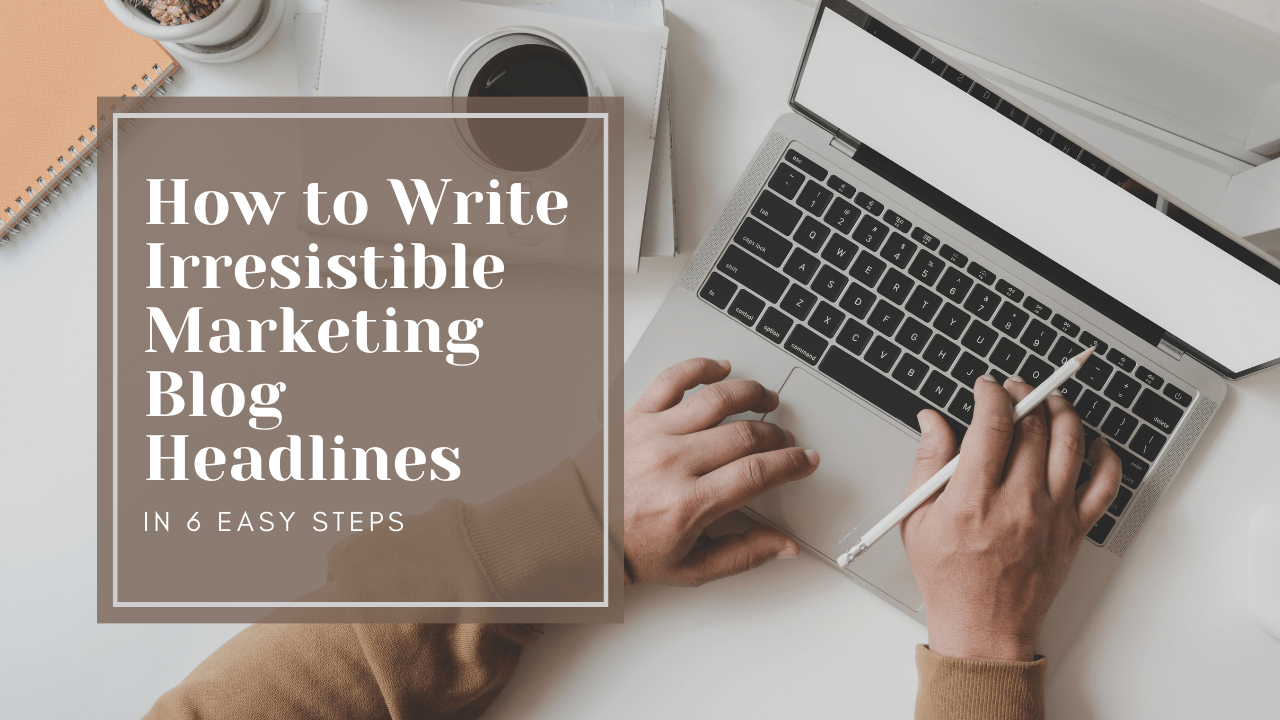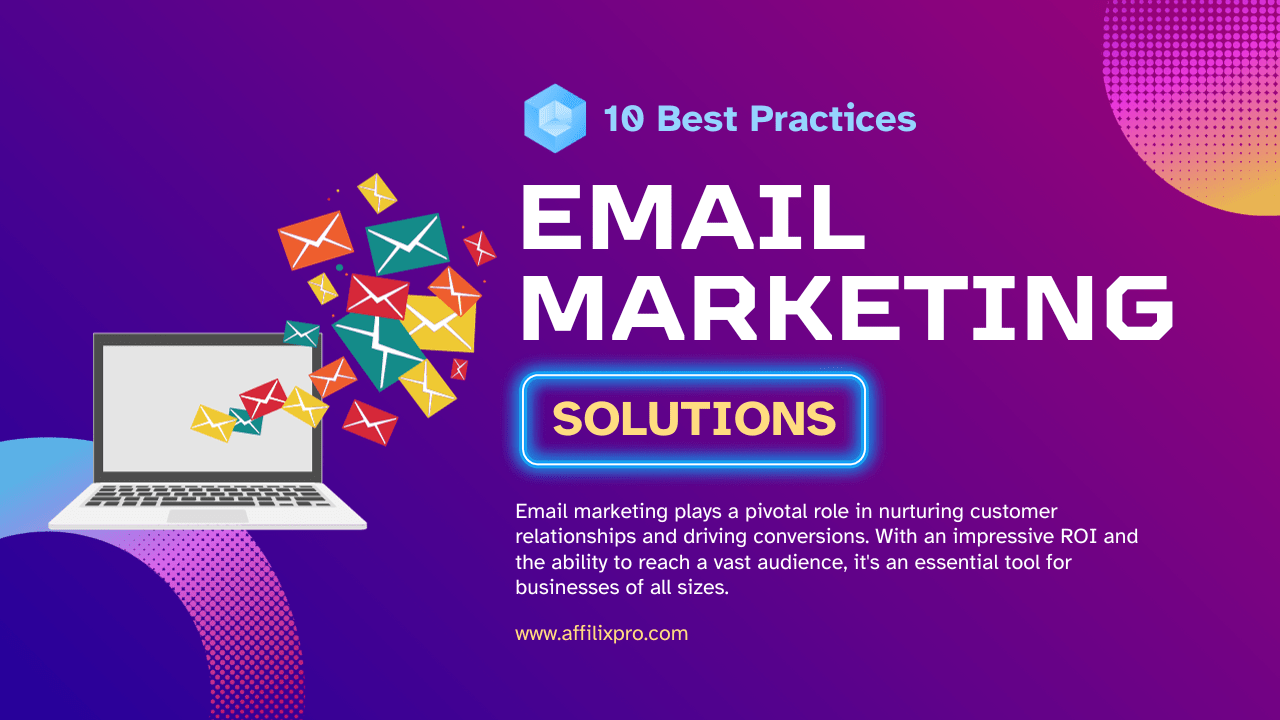How to Write Irresistible Marketing Blog Headlines
Imagine you’re walking through a crowded street. There are neon signs, billboards, and street performers all vying for your attention. In this chaotic, information-saturated world, what makes you stop and take notice? It’s that one intriguing sign, a captivating headline, or an eye-catching performance that pulls you in. The same principle applies to the digital world, where your blog’s headline serves as the flashy neon sign, the beacon that lures readers in.
The Art of the First Impression
The world of online content is a bustling marketplace. It’s estimated that over 4.4 million blog posts are published every day. In this vast expanse of the internet, a captivating headline can mean the difference between your content getting lost in the void or becoming an internet sensation.
The headline is your content’s first impression, and as the saying goes, “You never get a second chance to make a first impression.” The power of a compelling headline should never be underestimated. It’s your opportunity to grab a reader’s attention, to entice them to click, read, and engage with your content.

The Science of Human Attention
To create truly irresistible marketing blog headlines, we must delve into the science of human attention. Understanding what makes people stop scrolling and click on your headline is the key to success in the world of content marketing.
The Three-Second Challenge
In the fast-paced digital world, you have about three seconds to capture a reader’s attention. That’s all the time you have to convince them that your content is worth their precious time. This is where your headline plays a pivotal role. It’s the gateway to your content, the deciding factor for whether a reader stays or moves on.
The Psychology of Attention
Psychologists and neuroscientists have long studied how the human brain processes information and makes decisions. It turns out that the brain is wired to pay attention to certain cues. These cues include novelty, relevance, and emotional engagement. Your headline must be designed to trigger these cues and make the reader’s brain sit up and take notice.
The Role of Emotion
Emotion is the secret sauce of captivating headlines. Whether it’s a sense of urgency, excitement, curiosity, or empathy, headlines that evoke emotions are more likely to resonate with readers. We’ll explore the psychology of emotions and how you can tap into this powerful force to create headlines that connect with your audience on a deep level.
Overview of the Marketing Blog
In this comprehensive blog post, we’ll be your guide on the journey to crafting irresistible marketing blog headlines. From understanding your audience to optimizing for SEO, we will leave no stone unturned in your quest to master the art of headline writing.
Get ready to dive deep into the intricacies of captivating headline creation. We’ll equip you with tools, techniques, and insights to not only capture attention but to keep readers engaged and hungry for more. So, let’s embark on this captivating journey to discover the secret sauce behind writing headlines that demand a click.

Understanding Your Audience
Understanding your audience is the foundational pillar of creating irresistible marketing blog headlines. You wouldn’t speak to a room full of scientists the same way you’d talk to a group of kids at a playground. Similarly, crafting headlines without a profound understanding of your readers is like trying to hit a bullseye blindfolded. It’s possible, but your chances of success are slim.
The Importance of Audience Research
Before you put pen to paper (or fingers to keyboard), it’s crucial to embark on a journey of audience research. This step lays the groundwork for your entire content strategy. Here’s why it’s so important:
1. Personalized Appeal
Different audiences have different tastes, preferences, and pain points. When you understand your audience, you can personalize your headlines to address their specific needs. For instance, a headline tailored for stay-at-home parents should resonate with their unique challenges and aspirations.
2. Relevance and Engagement
Relevance is the key to capturing and maintaining a reader’s attention. When your headline speaks directly to the reader’s interests or problems, they’re more likely to engage with your content. Audience research helps you identify these points of relevance.
3. Targeted Content
Your content is more than just words on a page; it’s a solution to a problem or an answer to a question. Audience research helps you identify what those problems and questions are, allowing you to create content that addresses them directly.
Buyer Personas: Your Guiding Stars
One of the most effective tools for understanding your audience is the creation of buyer personas. Buyer personas are semi-fictional representations of your ideal customers based on market research and real data about your existing customers. Here’s how they guide you:
1. Focused Content
Buyer personas help you create content that speaks to the needs, interests, and pain points of your audience. When your headlines align with these persona profiles, you’re more likely to connect with readers.
2. Audience Segmentation
Your audience is not monolithic. They have different demographics, behaviors, and preferences. Buyer personas allow you to segment your audience and tailor headlines to different segments, increasing your content’s relevance.
3. Data-Driven Decision Making
Buyer personas are not mere guesses; they are built on data and insights. This data-driven approach ensures that your headlines are grounded in reality, not assumptions.
Reading Your Audience’s Mind
The ability to read your audience’s mind is a superpower that every headline writer should harness. You can’t physically enter a reader’s thoughts, but you can get incredibly close through these strategies:
1. Social Listening
Social media is a treasure trove of insights about your audience. By monitoring conversations, comments, and discussions related to your niche, you can get a real-time understanding of what’s on their minds.
2. Surveys and Feedback
Directly asking your audience for their opinions and feedback is a powerful way to gain insights. Online surveys, feedback forms, and comments on your content can provide invaluable information.
3. Competitor Analysis
Your competitors are likely targeting a similar audience. Analyzing their successful headlines can give you clues about what your shared audience finds appealing.
Tapping into Emotions
Emotions are the secret sauce behind compelling headlines. When you understand your audience’s emotional triggers, you can craft headlines that resonate deeply. Here’s how to tap into these emotions:
1. Empathy
Put yourself in your audience’s shoes. Understand their pain points, dreams, and fears. Empathizing with their emotions allows you to create headlines that connect on a human level.
2. Aspiration
What are your audience’s aspirations? Your headlines can promise to help them achieve these aspirations. Whether it’s success, happiness, or personal growth, framing your headlines in aspirational language can be highly effective.
3. Curiosity
Curiosity is a powerful emotion. It’s the drive to learn, discover, and satisfy one’s knowledge hunger. Use curiosity-evoking words or questions in your headlines to pique interest.
4. Urgency
Creating a sense of urgency can compel readers to act. Limited-time offers, time-sensitive information, or deadlines in your headlines can prompt immediate engagement.
Understanding your audience is an ongoing process. It requires continuous monitoring, data analysis, and adaptation to changing trends and preferences. With this strong foundation, you’re now ready to craft headlines that truly resonate with your readers and demand their attention.

Crafting Intriguing Headlines for Marketing Blog
Now that we’ve delved into the importance of understanding your audience, it’s time to roll up your sleeves and start crafting headlines that will have readers clicking with excitement. Crafting intriguing headlines is both an art and a science, and it’s a skill that can be honed over time. Let’s explore the various techniques and strategies to make your headlines irresistibly clickable.
The Four U’s Formula
The “Four U’s” formula is a time-tested method for creating headlines that instantly grab attention. Here’s what each “U” represents:
1. Useful
Your headline should promise value. Whether it’s information, entertainment, or a solution to a problem, your readers should perceive your content as a valuable asset.
2. Urgent
Creating a sense of urgency in your headlines encourages immediate action. Words like “now,” “today,” or “limited time” can instill a fear of missing out and drive clicks.
3. Unique
Uniqueness sets your headline apart from the competition. It should stand out, offering something fresh or presenting a new perspective on a common topic.
4. Ultra-Specific
Being specific in your headlines adds clarity and trust. Instead of vague promises, use concrete details that provide a clear idea of what the reader will get.
The Listicle Phenomenon
Listicles, or list articles, have taken the internet by storm. Why are they so popular, and how can you harness their power for your headlines?
The Scannability Factor
Listicles are scannable. Readers can quickly assess what they’ll get from the content by glancing at the list. This scannability can be a compelling reason to click.
Promise of Quick Digestion
Listicles often promise easy-to-digest information. Readers know they won’t need to invest a lot of time or effort to understand the content.
The “Curiosity Gap”
Listicles often employ the “curiosity gap” by using titles like “10 Amazing Tricks You Won’t Believe #7!” Readers are intrigued and curious about what they might be missing, and this drives clicks.
Potential for Virality
Listicles are shareable and have the potential to go viral. Their simple, structured format makes them easily shareable on social media.
The Fear and Curiosity Factor
Two potent emotions—fear and curiosity—can be used strategically in your headlines:
1. Fear of Missing Out (FOMO)
Creating a sense that readers might miss out on something valuable can be a powerful motivator. Headlines like “Don’t Miss These Exclusive Offers!” tap into FOMO.
2. Curiosity-Driven Headlines
Curiosity is the urge to know more. Craft headlines that evoke this feeling. “The Surprising Secret to a Happier Life” intrigues readers and encourages them to click to satisfy their curiosity.
3. Balancing Fear and Curiosity
Balancing these emotions is essential. Too much fear can be off-putting, while too much curiosity without delivering value can lead to disappointment.
Punctuation & Grammar Hacks
Punctuation and grammar may seem mundane, but they can work wonders in your headlines:
1. The Power of the Question Mark
A question mark at the end of a headline invites the reader to engage. It can spark curiosity and prompt readers to seek answers in your content.
2. Exclamation Marks for Excitement
Exclamation marks convey enthusiasm and excitement. However, use them sparingly to avoid making your headlines seem sensationalized.
3. Power Words and Adjectives
Incorporate powerful words and adjectives that evoke emotions and imagery. Words like “amazing,” “essential,” or “mind-blowing” can add depth to your headlines.
4. Using Numbers
Numbers provide structure and predictability. Headlines like “5 Proven Strategies to Boost Your Productivity” are both specific and scannable.
Crafting intriguing headlines is an ongoing process. Don’t be discouraged if not every headline hits the mark. A/B testing and analyzing data can help you refine your skills. Remember, the art of headline writing is a blend of creativity and strategy, and practice makes perfect. So, keep experimenting and fine-tuning your headlines to make them irresistible to your target audience.

Testing and Optimization
In the ever-evolving world of online content, what worked yesterday may not work tomorrow. That’s where testing and optimization come into play. By continuously evaluating and fine-tuning your headlines, you can stay ahead of the curve and ensure your content remains compelling. Let’s explore the key aspects of testing and optimization:
A/B Testing: The Ultimate Secret Weapon
A/B testing, also known as split testing, is the cornerstone of headline optimization. It involves comparing two different versions of a headline to see which one performs better. Here’s how you can leverage this technique:
1. The Headline Variations
Create two versions of a headline—one is your current headline (the control), and the other is a slightly modified version (the variant). The modification can involve changing a word, punctuation, or even the order of words.
2. Testing Methodology
Show the control headline to one group of readers and the variant to another. Monitor the performance of each headline to determine which one garners more clicks, engagement, or conversions.
3. Iterative Improvement
Based on the results, choose the winning headline. But don’t stop there. Use the winning headline as your new control and create a new variant for further testing. This iterative process allows you to refine your headlines continuously.
4. Tool Assistance
There are numerous A/B testing tools available, like Google Optimize, Optimizely, and Split.io, which can simplify the process and provide valuable insights.
Click-Through Rate (CTR) and Its Significance
CTR is a vital metric for assessing the effectiveness of your headlines. It measures the percentage of people who click on your headline after seeing it. Here’s why CTR is so crucial:
1. Audience Engagement
A high CTR indicates that your headline is effectively engaging your audience. It shows that the headline is not only getting attention but also prompting action.
2. SEO Impact
CTR is a factor considered by search engines when ranking your content. A higher CTR can contribute to improved search engine rankings, driving more organic traffic.
3. Conversion Potential
A compelling headline doesn’t just stop at clicks; it can also lead to higher conversion rates. A headline that aligns with your content can attract an audience that is genuinely interested in what you have to offer.
4. Continuous Evaluation
Monitoring your CTR provides valuable feedback. If you notice a declining CTR, it’s a sign that your headlines need optimization or refreshing.
Tools to Supercharge Your Testing
In the digital age, there’s no shortage of tools and resources to supercharge your headline testing and optimization efforts:
1. A/B Testing Tools
As mentioned earlier, A/B testing tools like Google Optimize, Optimizely, and Split.io can streamline the testing process, providing statistical significance and insights.
2. Heatmaps
Tools like Crazy Egg or Hotjar offer heatmaps that show where users are clicking on your web page. This can help you understand how your headlines impact user behavior.
3. Analytics Platforms
Google Analytics and other analytics platforms provide in-depth data on the performance of your content, including CTR. Utilize these platforms to track and analyze headline performance.
4. Social Media Insights
Most social media platforms offer insights into the performance of your posts. Use this data to understand which headlines resonate with your audience on different channels.
Learning from Data: A Continuous Process
Testing and optimization are not one-time endeavors; they are continuous processes. Here’s how to make the most of your data:
1. Data-Driven Decisions
Base your headline decisions on data and not assumptions. The data is your compass, guiding you toward headlines that truly resonate with your audience.
2. Keep Testing
Never stop testing and optimizing. As trends change and your audience evolves, so should your headlines. Regularly refresh your headlines to keep them relevant.
3. Collaboration and Feedback
Involve your team in the testing process. Encourage collaboration and collect feedback. Sometimes, a fresh perspective can lead to breakthrough headline ideas.
4. Stay Informed
Keep an eye on industry trends and competitors. What works for others can inspire your own headline strategies.
Testing and optimization are not a one-size-fits-all endeavor. Your specific audience and niche will influence what works best for your headlines. It’s a journey of discovery and constant improvement, and by leveraging data and testing, you can stay at the forefront of creating headlines that truly captivate your readers.

Content and Headline Alignment
The alignment of your content and headlines is a critical factor in creating compelling and trustworthy content. Ensuring that your headlines accurately represent the content they introduce is not only an ethical practice but also essential for retaining readers and building a loyal audience. Let’s explore the intricacies of aligning your content and headlines effectively:
1. The Unforgivable Sin of Clickbait
Clickbait is a term often used to describe sensationalized headlines that don’t deliver on their promises. They may pique curiosity but disappoint readers when the content fails to match the headline’s hype. Here’s why you should avoid clickbait:
- Trust Erosion: Clickbait damages your credibility and trustworthiness. Readers who feel deceived are unlikely to return to your content.
- Short-Term Gain, Long-Term Loss: While clickbait can result in a quick influx of clicks, it typically doesn’t lead to long-term engagement. The initial interest quickly fades when readers realize they’ve been misled.
- SEO Impact: Search engines aim to deliver relevant and valuable content to users. If your content consistently underdelivers compared to your headlines, it can negatively affect your search engine rankings.
2. Ensuring Consistency
Consistency in your headlines is a vital aspect of content and headline alignment. It involves maintaining a certain style, tone, and approach in your headlines to create a recognizable and reliable brand. Here’s how you can achieve consistency:
- Brand Guidelines: Develop brand guidelines for your headlines. These guidelines should define the preferred style, tone, and formatting that align with your brand identity.
- Editorial Calendar: Create an editorial calendar that outlines the topics and themes you’ll cover in your content. This ensures that your headlines match the content you produce.
- Audience Expectations: Consider what your audience expects from your content. If your brand is known for in-depth analysis, your headlines should reflect this commitment to depth and quality.
- Proofreading: Inconsistencies can also stem from simple errors in punctuation, capitalization, or grammar. Ensure your headlines are free from these issues.
3. Value Proposition: The Glue That Holds it All
Your headline should not only represent the content but also convey the value that readers will gain from consuming your content. Here’s how you can ensure that your headlines communicate a clear value proposition:
- Addressing Pain Points: Identify the pain points or questions your audience has and address them in your headlines. This demonstrates that your content provides solutions or answers.
- Benefits Over Features: Rather than focusing solely on the features of your content, emphasize the benefits. Explain how your content will improve your readers’ lives or help them achieve their goals.
- Clarity and Transparency: Avoid vague or ambiguous language in your headlines. Clearly communicate what your content offers. Transparency builds trust with your audience.
- A Balanced Promise: Your headline should promise a satisfying experience without overhyping it. It’s about finding the sweet spot between enticing and accurate.
Content and headline alignment isn’t a one-time task but an ongoing practice. As your content evolves and your audience’s needs change, your headlines should adapt accordingly. A well-aligned headline not only attracts readers but keeps them engaged and coming back for more. Remember, the bond of trust between your headlines and your content is the foundation of a loyal readership.

SEO and Headline Harmony
Search engine optimization (SEO) and headline writing are two peas in a pod. To ensure your content reaches its intended audience, it’s crucial to find the right balance between creating headlines that captivate human readers and ones that appeal to search engine algorithms. Let’s dive into the world of SEO and headline harmony:
Keywords in Headlines: A Balancing Act
Keywords are the heart of SEO, and incorporating them into your headlines is essential. However, it’s not just about stuffing keywords haphazardly. It’s about finding a balance that ensures your headlines are both reader-friendly and search engine-friendly:
1. Keyword Research
Before crafting your headlines, conduct keyword research to identify the most relevant and high-performing keywords for your content. Tools like Google Keyword Planner or Ahrefs can be incredibly helpful in this process.
2. Natural Integration
Integrate keywords naturally into your headlines. Your primary keyword should ideally appear near the beginning of the headline. However, it should not disrupt the flow of the title or appear forced.
3. Long-Tail Keywords
Long-tail keywords are more specific and often less competitive. They can be a goldmine for attracting niche audiences. If possible, include long-tail keywords in your headlines to gain a competitive edge.
4. Reader-Centricity
While keywords are vital for SEO, your headlines must still be reader-centric. They should be engaging, informative, and pique curiosity. Strive for a balance that serves both humans and search engines.
SEO Best Practices for Blog Headlines
To ensure your headlines are in harmony with SEO best practices, consider the following strategies:
1. Meta Tags
Incorporate keywords in your meta title and meta description. These are what users see on search engine results pages (SERPs), and they can heavily influence click-through rates.
2. H1 Tags
Your headline should be tagged as an H1 (HTML heading) in your content. Search engines use H1 tags to understand the main topic of your page.
3. URL Structure
Optimize your URL structure by including keywords related to your content. A clean and descriptive URL can improve your search engine rankings.
4. Header Tags
Use header tags like H2, H3, and so on to structure your content. These tags provide an organizational hierarchy for search engines and help with user navigation.
5. Internal and External Links
Include relevant internal and external links in your content. This not only adds value for readers but also demonstrates to search engines that your content is well-researched.
Link Bait: The Sweet Spot
Link bait headlines are those that naturally attract backlinks. Backlinks are links from other websites to your content, and they are a powerful SEO factor. Here’s how you can create link bait headlines:
1. Original Research
Publishing original research or studies can attract authoritative backlinks. Craft headlines that highlight the unique nature of your research.
2. Expert Interviews
Conduct interviews with industry experts and use these interviews as a basis for your content. Expert insights often entice other sites to link to your content.
3. Resource Lists
Create comprehensive resource lists on specific topics. These can become go-to references for others in your niche, resulting in backlinks.
4. Infographics and Visual Content
Visual content, like infographics, is highly shareable. Create headlines that emphasize the visual appeal of your content.
Remember that while attracting backlinks is essential, the primary focus should be on creating content that provides value to your audience. Valuable content naturally garners backlinks over time.
Achieving SEO and headline harmony is an ongoing process. It’s about ensuring your headlines are optimized for search engines while still being engaging and informative for your human readers. The sweet spot is where SEO tactics and reader appeal meet, creating content that not only ranks well but also resonates with your target audience.
Conclusion
Congratulations! You’ve just embarked on a journey into the captivating world of blog headline creation. You’ve explored the delicate balance between art and science, between the lure of human psychology and the demands of search engine optimization. Now, let’s wrap up what you’ve learned and emphasize the key takeaways:
The Power of a Captivating Headline
In this blog post, you’ve come to understand that a captivating headline is not just a superficial dressing for your content. It’s the gateway to your digital world, the neon sign in the bustling marketplace of online information. A compelling headline is your chance to make a powerful first impression, captivating readers and luring them into your content.
The Science of Human Attention
Understanding the psychology of human attention is the cornerstone of headline creation. You’ve learned that you have a mere three seconds to capture a reader’s focus. By leveraging the psychology of novelty, relevance, and emotional engagement, you can design headlines that make the brain sit up and take notice.
Understanding Your Audience
Your audience is the compass guiding your headline creation journey. You’ve delved into the importance of audience research and the creation of buyer personas. By personalizing your headlines and addressing the unique needs of your audience, you can create headlines that resonate deeply.
Crafting Intriguing Headlines
Creating irresistible marketing blog headlines is an art form. You’ve explored the “Four U’s” formula, the listicle phenomenon, the fear and curiosity factor, and the power of punctuation and grammar. These techniques help you craft headlines that capture attention and spark curiosity.
Testing and Optimization
The world of digital content is ever-changing. You’ve learned about the power of A/B testing, the significance of click-through rate (CTR), and the tools that can supercharge your testing efforts. By consistently evaluating and optimizing your headlines, you can stay at the forefront of compelling content creation.
Content and Headline Alignment
Aligning your content with your headlines is essential for building trust with your readers. You’ve explored the pitfalls of clickbait, the importance of consistency, and the need to deliver on your headline’s value proposition.
SEO and Headline Harmony
SEO and headline writing are intertwined. You’ve discovered how to find the right balance between human-friendly and search engine-friendly headlines, incorporating keywords strategically, and following SEO best practices.
The Journey Continues
Creating irresistible blog headlines is a continuous journey. It’s about adapting to the ever-changing digital landscape, staying attuned to audience preferences, and evolving your headline writing skills. Whether you’re a seasoned content creator or just starting, there’s always room for improvement and innovation.
So, as you embark on your headline creation adventures, remember that you have the tools, knowledge, and insights to captivate your audience, optimize for search engines, and create content that stands out in the crowded digital marketplace. Keep experimenting, stay curious, and never stop honing your headline-writing craft.
FAQs
1. Are there any specific tools you recommend for keyword research?
Yes, for keyword research, tools like Google Keyword Planner, Ahrefs, SEMrush, and Moz Keyword Explorer are highly effective in identifying relevant and high-performing keywords for your content.
2. How frequently should I refresh or update my existing headlines?
The frequency of updating headlines can vary depending on your content type and industry. As a general rule of thumb, it’s a good practice to review and refresh headlines annually to keep your content relevant.
3. Should I always use long-tail keywords in my headlines for SEO?
While long-tail keywords can be highly effective, they may not always be suitable for every piece of content. It depends on your content’s goals and the search intent of your target audience. Sometimes, a mix of short-tail and long-tail keywords can be the best approach.
4. How do I ensure that my headlines remain consistent with my brand guidelines?
Creating and adhering to brand guidelines for your headlines is essential. These guidelines should outline your preferred style, tone, and formatting. Consistency can also be maintained through an editorial calendar that aligns with your brand’s identity.
5. What’s the biggest mistake to avoid when it comes to headline creation?
The most significant mistake to avoid is creating clickbait headlines that don’t deliver on their promises. Deceptive or sensationalized headlines can erode trust with your audience and harm your credibility in the long run.
Now that you’re armed with the knowledge to craft irresistible blog headlines, go forth and create content that not only captures attention but keeps readers coming back for more. Happy headline writing!
Photo by Unsplash

















